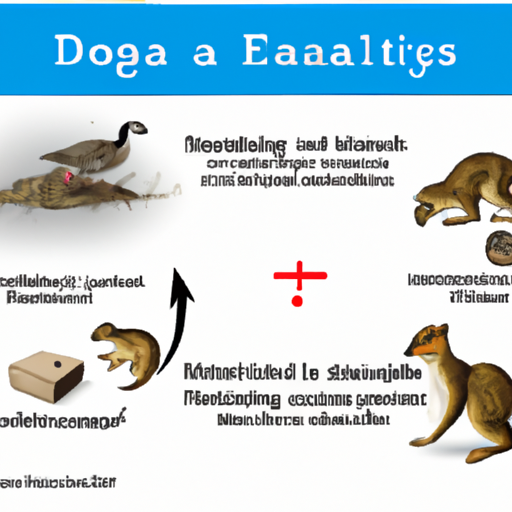 Introduction:
Introduction:
Earthquakes, the violent shaking of the Earth’s crust, can cause devastating damage to human lives and infrastructure. While seismologists strive to improve earthquake prediction models, nature seems to possess an intuitive warning system that often goes unnoticed – the behavior of animals. For centuries, anecdotal evidence has suggested that animals can sense impending earthquakes and display unusual behaviors beforehand. This article aims to delve into the vast world of animal behavior preceding earthquakes, exploring their abilities and the potential underlying mechanisms.
1. Historical Observations:
Throughout history, accounts of animal behavior preceding earthquakes have been documented worldwide. Ancient civilizations in China, Greece, and Japan recognized the connection between animal behavior and seismic events. Aristotle, in his work “Meteorology,” noted that animals such as snakes, rats, and weasels displayed erratic behavior before an earthquake. Similarly, Chinese records from 373 BCE mention the peculiar actions of various animals prior to seismic events.
2. Common Animal Behaviors:
Animals exhibit a wide array of behaviors that have been associated with impending earthquakes. While these behaviors vary across species, some common observations include:
a. Unusual Agitation: Dogs, cats, and other domestic pets may display restlessness, pacing, and increased vocalization. They may exhibit signs of anxiety or seek comfort from their owners.
b. Altered Feeding Patterns: Birds, rodents, and other animals may exhibit changes in feeding habits. A sudden decrease or increase in appetite, increased foraging, or disrupted feeding routines have been reported.
c. Abnormal Movements: Wildlife such as deer, elk, and cows may exhibit unusual movement patterns, often migrating to higher ground or away from riverbanks. Marine animals may beach themselves before a tsunami-triggered earthquake.
d. Vocalizations: Birds, frogs, and insects may produce atypical calls or sounds before seismic activity. This behavior could be attributed to their heightened sensitivity to infrasound, low-frequency sound waves emitted before an earthquake.
e. Nesting and Burrowing: Bees, ants, and other insects may abandon or behave erratically around their nests or hives. Similarly, animals that burrow underground, like snakes and rodents, may exhibit unusual behavior.
3. Possible Explanations for Animal Sensitivity:
Despite the anecdotal evidence, the scientific community is still unraveling the mechanisms behind animals’ ability to sense earthquakes in advance. Several hypotheses have been proposed:
a. Infrasound Detection: Animals possess a remarkable sensitivity to infrasonic waves, which are inaudible to humans but are emitted by tectonic movements associated with earthquakes. Some species, like elephants and whales, have specialized organs that can detect infrasound, aiding their ability to sense seismic activity.
b. Electromagnetic Sensitivity: Earthquakes generate electromagnetic disturbances known as “seismic electric signals.” Some animals, particularly migratory birds and marine species, possess magnetoreception abilities, allowing them to sense these disturbances and adjust their behavior accordingly.
c. Chemical Changes: It is possible that the release of gases or changes in groundwater composition prior to an earthquake could trigger reactions in animals. These changes may cause discomfort or distress, leading to altered behavior.
4. Challenges in Studying Animal Behavior:
Although numerous anecdotal accounts exist, studying animal behavior preceding earthquakes poses several challenges. These include the unpredictable nature of seismic events, the difficulty in documenting animal behavior in remote areas, and the lack of controlled experiments. However, advancements in technology, such as GPS tracking, animal sensors, and citizen science initiatives, are enabling scientists to gather more data and explore patterns.
Conclusion:
The intricate behaviors displayed by animals before an earthquake offer tantalizing clues about the natural world’s ability to sense impending seismic events. While further research is needed to understand the mechanisms underlying this phenomenon, acknowledging and studying animal behavior can potentially contribute to the development of early warning systems for earthquakes. By harnessing the innate instincts of animals, we may unlock valuable insights that can save lives and minimize the impact of these destructive natural disasters.
